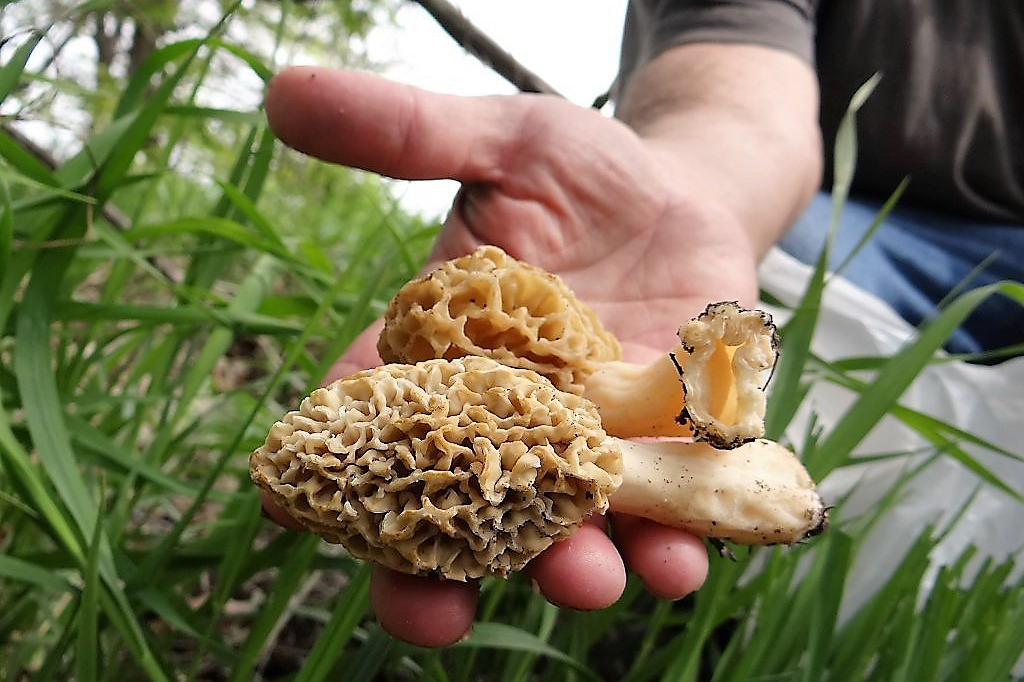
By Greg Wagner
Morel mushrooms (Morchella esculentoides) emerge in spring, triggered by a combination of warm soil temperatures (around 50°F), adequate moisture, and suitable habitats — along with a few secrets the natural world keeps to itself.
Key Factors and Signs of Morel Mushroom Emergence
Timing & Growth Cycle
Morels typically emerge in late April and early May in eastern Nebraska, with the timing varying depending on weather conditions. Once forth, an individual morel mushroom will continue to grow for up to 7 days. After that period, the morels get mushy and then dry out. The good thing, however, is that not all of the morels in an area come up at the same time.
Soil Temperature
Morel mushrooms are highly sensitive to soil temperature, with optimal growth occurring when soil temperatures 4-6 inches below the surface reach around 50°F (10°C) and stay that way for several consecutive days. Typically, daytime temperatures need to be in the low 70s and nighttime temperatures in the 50s.
Moisture
There needs to be enough moisture for morels to fruit, with periods of soaking rain and damp conditions promoting growth. Morel mushrooms are comprised of about 90 percent water. Drought impacts morel mushrooms in a big way. The morel needs warmth and sunlight, but it also requires moist soil. During a drought, the morel is less likely to emerge, and if it does, it may be smaller, less abundant and have a much shorter growing season. The best time to look for the morel following a dry period is just after a good spring rain.
Sunlight
While morels can grow in shaded areas, they also benefit from some sunlight, most notably during the early stages of their emergence.
Suitable Habitats
Morels often exist in areas with particular habitats, such as moist, mature woodlands. Look near the base of dead and dying trees with decaying leaf litter, wood and other organic matter (especially cottonwood and elm with the bark just peeling off). Morels can often be found in areas that have been disturbed by fire and past flooding events. Old-growth woodlands along river bottom floodplains offer great habitat for finding the morel.
Nature’s Signs
With more than 50 years of morel mushroom foraging experience, I have found the peak of morel mushroom harvest to be when the lilacs are in full bloom. Other indicators of morel mushrooms making their springtime appearance are dandelion flowers, garlic mustard seedlings, tree buds, plum blossoms, and flowering woodland phlox.
Land Access Considerations
Game and Parks Lands
Lands owned and managed by the Nebraska Game and Parks Commission are open to collecting morel mushrooms for personal use (non-commercial use) but always check regulations before you collect to be sure. State park lands require a current state park permit on a motor vehicle. Those heading to state wildlife management areas must be aware that spring wild turkey hunters are also on the premises. Open Fields and Waters program sites are not open to mushroom harvesting.
Private Property
Whether private property is posted or not, permission from the landowner has to be obtained before entering it and boundary fences should be noted.
